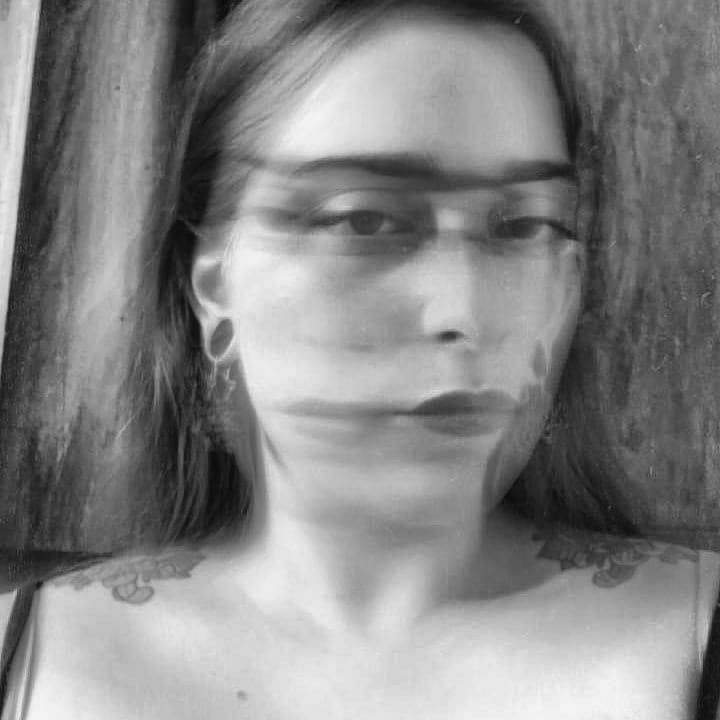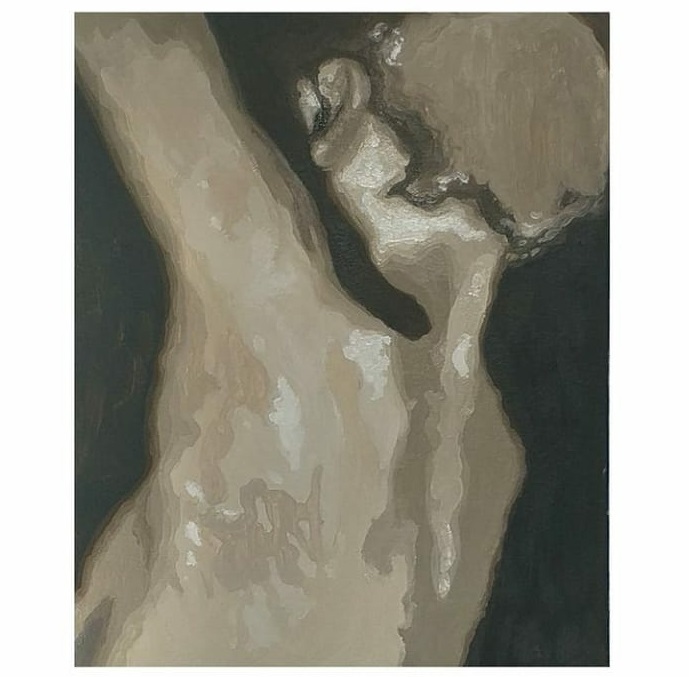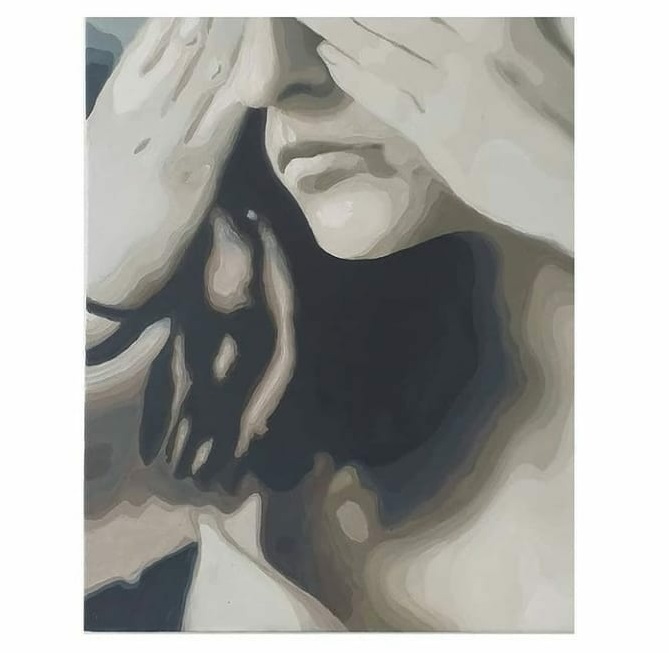Elisa Ziero is the winner of YV – YOUVIRTUAL, an open call for visual artists, organized on Instagram by the YV Collective (managed by Simone and Michele, assisted by Caramello, Francesca, Sarah), which aimed to help artists to make themselves known during this dictated period from Covid-19.
Among the names of the artists who have distinguished themselves we find Sara Pacucci, Alessandro Sebastianelli, Alice Grisolden, Roberta Liut, Fabio Ponticelli, Ghazal Felan.
Among all the winner of the competition was Elisa Ziero, student of the Academy of Fine Arts in Venice, who tells herself in this interview:

1.
Hi Elisa, the first question is routine: when did you discover your passion for painting? What studies have you done or are you doing? We know that you attend the academy of venice … do you think it was useful or that it directed you too much towards a specific path?
My passion for art started as a child but then I abandoned it to follow another path: I attended the F. Algarotti tourist technical institute in Venice and I was able to study three languages, discovering my interest in German. I then wanted to attend the Academy for my personal interest, even if the idea of one day working as an artist intrigues me. Being within the academic system has given me a lot of strength and I have to thank some teachers for that. I think that artistic growth depends a lot on you but above all on the professors who follow you, even more so if you don’t come from an artistic high school.
2.
There is a great deal of attention to anatomy in your paintings, although you tend to abstract figures, which may suggest that anatomy may be less precise. How important is the right anatonia to you? Do you believe that its proper rendering prevents you from letting go or helps you in your creative process?
When I started to focus my research on the body I was very critical of anatomical details and this held me back enough so that if I wrong the inclination of some spots I would wait for the color to dry and go over it again. Then with the passing of the months in a very gradual way I tried to decrease the attention for these parts to focus on the overall visual effect. The human eye, in fact, does not recognize the shape because it is rich in details but because he has already seen it. So I was able to work more peacefully and start a process of visual breakdown and reconstruction more and more.

3.
The rendering of light is a central point of your research. It seems to shape the bodies making them very realistic. Tell us how you study light, if you use particular lamps to take photos or portraits from life! Also, the color you use is often very close to black and white, a technique mainly used in photography. Why?
I think that the light is what gives life to the subjects, if the subject is missing it becomes dark and does not hit the eye. For photography I kept a very dim light and used the flash to be able to create fairly sharp shadows, but then I decided to buy a lamp with warm light and since then no more flashes. As for color, in recent years I have ranged from very bright colors to darker colors and for my current research I have preferred to focus on neutral tones. These make it easier to make variations and easier to read the elements. Lately I’ve been making the hazelnut colors more dull, on gray and it will be a great challenge for me to continue on this path.
4.
Who are the artists, painters or photographers (or other) who inspired you or to whom you feel particularly attached? Which artists do you study color, brushstroke, framing
etc? On the other hand, are there artists who have nothing to do with your studio, but who you particularly appreciate, both past and contemporary?
The first year I remember being obsessed with Van Eyck and Goya but I never went beyond observing their works. As for my studio, on the other hand, I made some color tests looking at the works of Luc Tuymans from which I took the continuous use of white in all shades, Michael Borremans, Aaron Duval and Louise Giovanelli for the photographic cutting of the subjects. . There are also many photographers that I follow and who have helped me to study the body among the like the great Man Ray and Julie van der Vaart.

5.
Is there more you would like to tell us about your research?
In addition to the search for light, anatomy, color and framing … What is the main theme of your work?
My pictorial research is aimed at investigating the body and its identity. I use a gaze aimed at a personal vision of the body, studied through a close photographic cut and the desire to express, its way of being and interacting with space. Space that is almost missing, suffocated by the subject, who, immobile, seems to stop expressing a sense of oppression, aided by the language and poses that the individual parts acquire. In this way the body is no longer represented as a mere living body but as being and reality itself, a continuous identification of the individual in the intertwining of self-awareness and openness to the other, which traps but at the same time expresses different sensations.
6.
Let’s talk about the creative process. What technique do you use, oil or acrylic or something else? How long does it take to choose the subject, frame, etc. and how long does it take to create a work? What are the average dimensions of your paintings?
I use oil on both canvas and paper. Sometimes I make preparatory sketches with watercolor on paper, just to study the pose and the framing to give to the subject to better distribute it in the space. On average I don’t make many pieces, maybe 1 2 a month since choosing the subject and taking good photos takes me most of the time. Once you have chosen the subject, taken the photos and noted the drawing, on average it takes 3 to 7 days to finish a painting. For the dimensions, instead, space for small paintings 40 x 30 up to slightly larger canvases, the last 80 x 60.

7.
Finally, we would like to know what your plans are for the future. How will your research continue? Do you already have some ideas or will you treat them for a long time? Do you have any exposure in mind in the near future?
I hope to deepen the theme of the body by inserting more color and perhaps also studying the possible settings better, trying to widen myself. I have not yet had the opportunity to participate in any exhibition unfortunately for me but I hope that sooner or later there will be the opportunity.
8.
We close the interview with a more personal question. How much does painting affect your life? How important is art to you? And what would you recommend to do?
someone approaching painting for the first time?
Painting is a fascinating practice as much as much more difficult in many respects, at least for me. I dedicate a lot of time to this because I would like to continue growing in so many different ways. I am in constant struggle with myself because I always tend to want to be in control of what I do, but I often feel suffocated. I hope one day I can free myself more. Despite this, painting also freed me from so many barriers that I had created by distancing myself from the world of art. Creating images is always nice because then they live forever even if you turn your back on them to become something else. The advice I can give is to always believe in what you do, even if we would like to wrinkle everything and throw it in the garbage. Self-criticism helps a lot, but I think sometimes we are too influenced by it. Be but above all feel free.